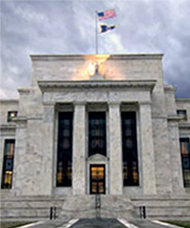The underlying agenda of the regulators is to get as much of the derivatives market on cleared platforms. But they recognize that it isn’t going to be possible to get all trades cleared. How to deal with non-cleared derivatives is tricky, especially when the entities trading with the banks are non-financials. The evolution of the rules took another step last week.
In September 2013 IOSCO and the BCBS announced rules for margining non-cleared derivatives. The primary document was “Margin requirements for non-centrally cleared derivatives”. While the BCBS said in the report:
“…With respect to other non-centrally cleared derivatives; the BCBS and IOSCO support margin requirements that, in principle, would involve the mandatory exchange of both initial and variation margin among parties to non-centrally cleared derivatives (“universal two-way margin”)…”
They also gave a pass to non-financial entities:
“…The BCBS and IOSCO believe that the margin requirements need not apply to non-centrally cleared derivatives to which non-financial entities that are not systemically important are a party, given that (i) such transactions are viewed as posing little or no systemic risk and (ii) such transactions are exempted from central clearing mandates under most national regimes…”
There isn’t a lot written about what constitutes a systemically important non-financial entity, but we suspected it was a pretty small club.
In June 2014 Finadium wrote a paper “Preparing for Risk-Based Margining of Non-Cleared Derivatives” reviewing the requirements and how the models worked.
The new US rules change some things around. Gone are the prescribed margin amounts. The proposed US regulations say:
“…Unlike the 2011 proposal, this proposal does not require that the covered swap entity determine a specific, numerical threshold for each nonfinancial end user counterparty. Rather, the proposed rule does not require a covered swap entity to collect initial margin and variation margin from nonfinancial end users and certain other counterparties as a matter of course, but instead requires it to collect initial and variation margin at such times and in such forms and amounts (if any) as the covered swap entity determines would appropriately address the credit risk posed by swaps entered into with “other counterparties…”
From the September 3, 2014 Joint Press release:
“…the proposed rule does not require a covered swap entity to collect specific or minimum amounts of initial margin or variation margin from nonfinancial end users, but rather leaves that decision to the covered swap entity, consistent with its overall credit risk management. The agencies believe this rule maintains the status quo for nonfinancial end users and is consistent with the requirements of the Dodd-Frank Act…”
From a September 4, 2014 article in IFR “DERIVATIVES: Fed backs off corporate margin requirements” by Mike Kentz comparing an earlier set of regs to the most recent proposal:
“…The 2011 proposal would have required corporates to post margin to its bank counterparty on all uncleared transactions. The revised proposal states that corporates only have to post margin when its bank counterparty deems it necessary based on the bank’s internal counterparty credit risk assessment, which is how margin calls are assessed currently…”
Exactly how and when banks will determine if it necessary to post will be interesting. Is this caving into the lobbying and giving carte blanche to non-financials? This is reminiscent of the pro-cyclical debate, centered around “cliff effects” – when margin requirements were triggered by a change in the financial status of an institution, causing large amounts of margin to be required, potentially causing a liquidity crisis. De minimis or even no margin, on the other hand, pushes the risk back to the banks. Is there a “Goldilocks” margin model out there that will satisfy regulators? Not too little, not too much? It looks like a 10-day market stress period will be just right. From the IFR article:
“…The Fed proposal would require that banks collect enough margin to cover an ‘extreme but plausible’ loss on a trade over a 10-day period of market stress, according to Sean Campbell, deputy associate director in the division of research and statistics at the Fed…”
Using 10-day stress numbers in a VaR model (versus 5-day in cleared swaps) will cover a host of sins. But it will depend on the historical look-back period used and other tweaks to the models. Different banks will inevitably use different models. The potential for creating competitive advantages based on those differences is real. A conservative application of the 10-day stress model could end up with margin amounts being substantial, belying the initial impression that impacted non-financials are getting a pass.


